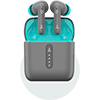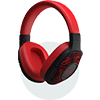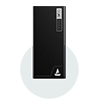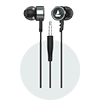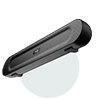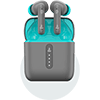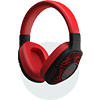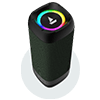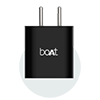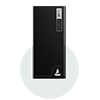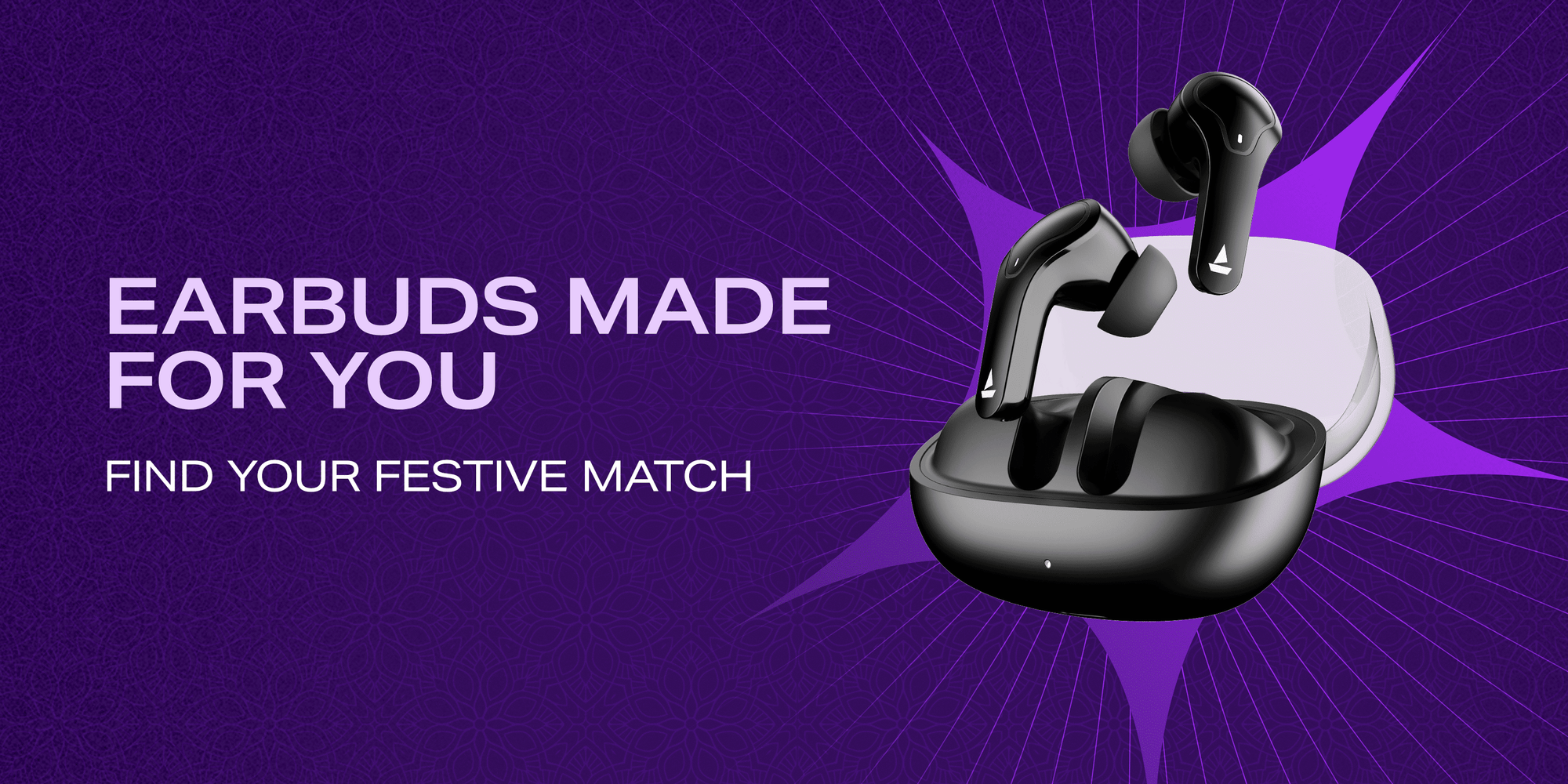You know that moment when you’re walking through a busy street, juggling shopping bags in one hand and your phone in the other, and your earphones get caught or fall out? We’ve all been there. With festival season around the corner, everyone’s scrambling for that perfect gift, something useful, meaningful, and fun.
If you’re thinking of gifting audio gear, you're probably torn between Bluetooth earbuds (truly wireless) or a wireless neckband (the “always-on your neck” style). Which is the better festive gift? Which gives more value, comfort, and that “wow” factor?
Here, we will help you pick the best audio gift without second-guessing.
Neckbands vs. Earbuds: What’s the Difference?
In a wireless neckband, a flexible band rests around the neck and wires run from it to the two earpieces. It often blends the benefits of wired and wireless designs. On the other hand, earbuds are totally wire-free. Each earbud is standalone and relies on a charging case for extra battery.
Pros of Wireless Neckbands
1. Longer battery life (in many cases)
Since neckbands carry a larger battery in the band itself, they often deliver longer continuous playback. For example, the boAt Rockerz 255 Pro+ offers up to 60 hours of playtime on a charge.
2. Less risk of losing one side
With earbuds, you sometimes misplace one bud or lose it. Neckbands keep both ends tethered, lowering the risk of losing an earbud. And neckbands like our Rockerz 110 even come with magnetic earbuds.
3. Stable connection and fewer dropouts
Since both earpieces wire back to the central band, synchronisation or drops can be less likely than in some dual-earbud setups (especially in crowded signal zones).
4. Quick charge in many models
Many neckbands incorporate “ASAP charge” or fast charging features, so a short burst charge yields many hours of listening.
Pros of Bluetooth Earbuds (TWS)
1. No wires of any kind
Earbuds offer maximum portability. You can toss them in a pocket and go; no band around your neck.
2. Compact and very lightweight
Earbuds are more comfortable for extended wear, especially during workouts, commuting, or even lying down.
3. Modern features
TWS models, like boAt Airdopes 181 Pro, come with smart features like in-ear detection, auto-pause when you remove them, touch controls, etc.
4. Easier to manage for multiple devices
With multipoint connectivity, pairing and switching from one device to another is seamless.
So, Which is the Best Audio Gift?
|
Recipient Type |
Best Pick |
Why |
|
Commuter/traveller |
Neckband |
Longer battery, less worry about losing a bud |
|
Fitness/gym lover |
Earbuds |
Lightweight, no hoops or wires bouncing |
|
Gamer/binge-watcher |
Earbuds |
Low-latency, premium audio |
|
Parents/non-tech savvy |
Neckbands |
Simpler controls, fewer chances of misplacing |
|
Fashion-conscious |
Earbuds |
Stylish, compact, and cool cases |
boAt Picks You Can Gift with Confidence
1. boAt Rockerz 110 (Wireless Neckband)
-
Up to 40 hours of playback
-
IPX5 water and sweat resistance
-
ENx technology for clear calls
-
ASAP charge (10 hours charge in just 10 minutes)
This is a superb neckband for everyday users needing long battery life and reliability.

2. boAt Rockerz 255 Pro+ (Wireless Neckband)
-
boAt Signature Sound with Super Extra Bass
-
Up to 60 hours of playback time
-
Fast charging (full charge within an hour)
-
IPX7 water resistance (strong against sweat or splashes)
If you want a neckband that “just goes on and on,” this is a top-tier pick.

3. boAt Airdopes 181 Pro (Bluetooth Earbuds)
-
Up to 100 hours of playback
-
Quad mics with ENx™ noise-cancellation
-
IPX5 rating for sweat & splash resistant
-
LED battery indicator
These are premium earbuds for someone who wants a fully wireless experience combined with strong battery backup.

4. boAt Airdopes Alpha (Bluetooth Earbuds)
-
13 mm drivers delivering boAt Signature Sound
-
ENx technology with dual mics
-
Up to 35 hours total playback
-
BEAST™ mode with 50ms low latency
Alpha is a solid mid-range TWS option with a strong feature set and great everyday usability.

The Bottom Line
So, neckband or Bluetooth earbuds? There’s no one-size-fits-all answer. The ideal choice depends on who you're gifting, how they listen, and what features they'd truly use.
If your priority is battery, reliability, and fewer parts to lose, a wireless neckband like boAt Rockerz 110 or Rockerz 255 Pro+ is a winner. But if you want maximum portability, sleekness, and that “stylish” feel, Airdopes 181 Pro and Airdopes Alpha are excellent picks.
In the end, any of these boAt models will deliver joy, quality sound, and daily utility, making them strong contenders for the title of the best audio gift this festive season.
FAQs
1. Which lasts longer: neckband or true wireless earbuds?
In many cases, a neckband can carry a bigger internal battery and thus deliver longer continuous playback. But earbuds like Airdopes 181 Pro’s 100-hour playback are closing the gap.
2. Are neckbands safer?
Yes, since both earpieces are tethered via the band, you reduce the risk of misplacing one side, which is a common issue with Bluetooth earbuds.
3. Are neckbands better for lag-free gaming or earbuds?
It comes down to the low latency that keeps your video and audio in sync. It can differ from model to model.
4. How important is water and sweat resistance?
If you will use it in workouts or outdoors, IPX5+ ratings are essential. The boAt Rockerz 255 Pro+ even goes up to an IPX7 rating.
5. Which is easier to use by a non-technical person?
A neckband often wins here: it’s simpler to put on, charge, and understand. Less fiddling with charging cases or pairing.
